Four types of behaviour modifications or conditioning can be used when training animals. These are:
Watch
Watch this TED talk on dog training.
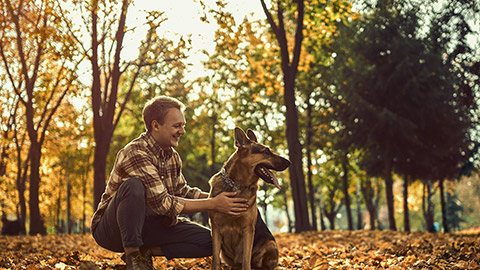
Positive reinforcement is a training technique used to encourage desired animal behaviours by providing a reward or pleasurable outcome immediately following the behaviour. The idea is that the animal will associate the behaviour with something positive, making them more likely to repeat it in the future. This method is widely regarded as humane and effective and helps build trust between the animal and the trainer or handler.
How Positive Reinforcement Works
- Identify the Desired Behaviour: Choose a behaviour you want to encourage, such as sitting, coming when called, or remaining calm in a specific situation.
- Provide Immediate Reward: When the animal performs the desired behaviour, immediately offer a reward to reinforce it. The reward could be in the form of treats, praise, petting, or playtime.
- Consistency is Key: Positive reinforcement is most effective when the reward is given every time the behaviour is performed, especially during the initial training stages. Over time, as the animal becomes more familiar with the behaviour, you can gradually reduce the frequency of rewards.
- Pair with a Cue or Command: Positive reinforcement often works in conjunction with a verbal cue or command (e.g., “sit” or “stay”) or a hand signal. This helps the animal associate the behaviour with both the cue and the reward.
- Shaping Complex Behaviours: For more complex behaviours, positive reinforcement can be used in stages by rewarding small steps that lead to the final behaviour, a process known as shaping.
Benefits of Positive Reinforcement
- Encourages Willing Participation: Animals are more likely to engage in training willingly when they know they will be rewarded.
- Strengthens Bond: Positive reinforcement builds trust and strengthens the relationship between the animal and the handler, reducing fear and anxiety.
- Reduces Stress: This method is gentle and reduces the risk of stress, aggression, or other negative emotional responses.
- Ethical and Humane: Positive reinforcement is widely viewed as an ethical and humane approach to animal training, as it avoids the use of punishment or fear.
Examples of Positive Reinforcement in Animals

Dog Training: Sit Command
- Desired Behaviour: The dog sits on command.
- Reward: When the dog sits, the handler immediately gives the dog a treat and praises them with a cheerful tone. Over time, the dog learns that sitting when asked results in a reward and is more likely to sit on command in the future.
Parrot Training: Step Up onto a Perch
- Desired Behaviour: The parrot steps onto a perch when asked.
- Reward: After the bird steps onto the perch, the handler offers a small piece of fruit or nut as a reward. The bird will associate stepping onto the perch with receiving a treat and repeat the behaviour when asked.
Horse Training: Standing Calmly for Grooming
- Desired Behaviour: The horse stands calmly while being groomed.
- Reward: After the horse stands quietly for a short period, the handler rewards them with a pat on the neck, soothing words, or a small carrot. Gradually, the horse learns that standing still while being groomed results in a positive experience.
Cat Training: Coming When Called
- Desired Behaviour: The cat comes when called.
- Reward: When the cat responds to its name or comes when called, the handler offers a treat or toy to play with. Over time, the cat learns that coming when called leads to a pleasant outcome.
Dolphin Training: Jumping Through a Hoop
- Desired Behaviour: The dolphin jumps through a hoop.
- Reward: After the dolphin successfully jumps through the hoop, the trainer rewards it with a fish or other favourite food. The dolphin learns that performing the jump leads to a treat and will repeat the behaviour during training sessions.
Rabbit Training: Using a Litter Box
- Desired Behaviour: The rabbit uses the litter box for toileting.
- Reward: When the rabbit successfully uses the litter box, the handler immediately gives them a small treat. This positive reinforcement helps the rabbit associate using the litter box with a reward.
Gradual Fading of Rewards
Once the animal consistently performs the desired behaviour, rewards can be given less frequently. This is known as intermittent reinforcement. While the animal will still receive praise or affection, treats or toys can be phased out, which prevents them from becoming dependent on receiving a reward every single time.
Avoiding Over-Rewarding
It’s important to balance rewards, particularly food-based ones, to avoid issues such as overfeeding or dependency. Treats should be small, and other forms of reinforcement (e.g., praise, petting, toys) should be incorporated into the training process.
Case Study
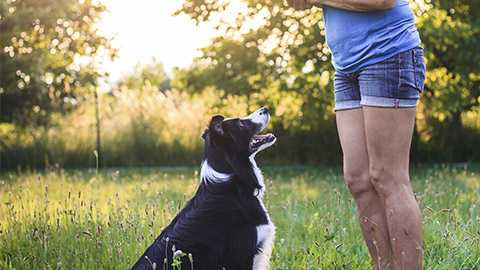
At Happy Paws Animal Care, one of the most common behavioural training goals for shelter dogs is teaching them basic commands like “sit.” This not only improves the dog's manners but also increases its chances of being adopted by making it more appealing to potential families. The staff at Happy Paws use positive reinforcement as their primary training method, ensuring a humane and effective approach that builds trust between the dog and the handler.
A young mixed-breed dog named Buddy was brought to Happy Paws. Buddy was energetic and eager for attention but lacked basic training. The staff needed to teach Buddy how to "sit" on command, as this behaviour would help calm him when interacting with staff, volunteers, and potential adopters.
Positive Reinforcement Strategy:
The team at Happy Paws decided to use food rewards and verbal praise as positive reinforcement to encourage Buddy’s learning. The goal was to reward Buddy each time he successfully sat, reinforcing the behaviour and helping him understand the command quickly.
Training Process:
- Setting Up the Environment: Buddy was taken to a quiet, distraction-free area of the facility to maximise his focus during the training sessions.
- Introducing the Command: One of the trainers, Sarah, stood before Buddy with a small piece of food in hand. She held the treat slightly above Buddy’s head while saying the word "sit." Naturally, as Buddy looked up at the treat, his bottom lowered to the ground.
- Rewarding the Behaviour: As soon as Buddy’s bottom touched the ground, Sarah immediately praised him by saying, “Good boy!” in an upbeat tone and gave him the treat. The timing was crucial here—Buddy needed to understand that sitting was what earned him the reward.
- Repeating the Process: This process was repeated several times during each session. Every time Buddy sat on command, he received a treat and verbal praise. Over time, Buddy began associating the word "sit" with the action of sitting and the positive outcome (receiving a treat and praise).
- Fading the Food Rewards: Once Buddy consistently responded to the "sit" command, the team began to phase out the food rewards gradually. They continued to offer verbal praise and the occasional treat to reinforce the behaviour, but Buddy now performed the action even without constant food rewards.
Within a few weeks, Buddy reliably sat on command in various settings, including more distracting environments like the outdoor play area and during meet-and-greets with potential adopters. The consistent use of positive reinforcement helped Buddy learn quickly while fostering a trusting relationship between him and the handlers at Happy Paws.
Benefits of Positive Reinforcement:
- Building Trust: Positive reinforcement strengthened the bond between Buddy and his trainers. He learned to trust that good behaviour would lead to positive outcomes, making him more eager to learn.
- Motivating Good Behaviour: Buddy was motivated to repeat the “sit” behaviour because he knew it resulted in something he enjoyed—treats and praise.
- Humane Training: This method avoided punishment or aversive techniques, ensuring Buddy remained happy and stress-free during the training process.
- Increased Adoption Chances: Buddy’s improved manners, especially his ability to sit on command, made him more appealing to adopters, increasing his chances of finding a forever home.
Watch
The next couple of videos provide explanations on positive reinforcement and examples of it.
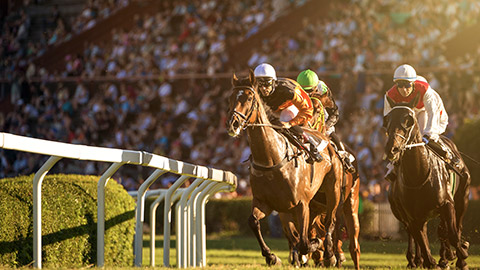
Positive punishment in animal training refers to adding an unpleasant consequence immediately after an undesirable behaviour to decrease the likelihood of that behaviour happening again. It is considered a controversial and less preferred method compared to positive reinforcement, as it can lead to negative side effects such as fear, anxiety, and damage to the animal-handler relationship if not used properly.
How Positive Punishment Works
- Identify the Undesirable Behaviour: Recognise a behaviour you want to reduce or eliminate, such as barking, biting, or jumping on people.
- Apply an Unpleasant Consequence: Immediately after the behaviour occurs, something unpleasant is introduced. This can be a loud noise, a leash correction, or a reprimanding sound.
- Behaviour Reduction: The goal is for the animal to associate the unpleasant consequence with the behaviour and, over time, stop engaging in it to avoid the negative outcome.
Concerns with Positive Punishment
- Fear and Anxiety: Using positive punishment can cause the animal to fear the handler, the environment, or the specific stimuli associated with the punishment.
- Aggression: In some cases, an animal might respond to positive punishment with defensive aggression, especially if it feels threatened.
- Unintended Associations: If not timed correctly, the animal might associate the punishment with something other than undesirable behaviour, leading to confusion and further behavioural issues.
- Ineffective Long-Term: Positive punishment doesn't teach the animal what the correct behaviour is; it only discourages the undesirable behaviour. In many cases, animals may find other inappropriate behaviours to replace the punished ones.
Examples of Positive Punishment
The leash Jerking for Pulling
- Undesirable Behaviour: A dog pulls on the leash during a walk.
- Punishment: The handler gives a quick leash jerk or correction each time the dog pulls.
- Outcome: The dog learns to avoid pulling to prevent the uncomfortable sensation on its neck.
- Risks: This method can cause physical harm to the dog’s neck or lead to fear and anxiety about walks or the handler.
Spraying Water for Barking
- Undesirable Behaviour: A dog barks excessively at visitors.
- Punishment: The handler sprays the dog with a water bottle whenever it barks.
- Outcome: The dog associates barking with the unpleasant sensation of being sprayed and may reduce its barking.
- Risks: The dog might start associating the spray bottle or even visitors with something negative, potentially leading to fear or stress.
Verbal Reprimand for Jumping
- Undesirable Behaviour: A dog jumps up on people.
- Punishment: The handler uses a firm, loud “No!” whenever the dog jumps.
- Outcome: The dog associates jumping with the unpleasant sound, which reduces the behaviour.
- Risks: Repeated verbal reprimands can cause the dog to become fearful of people or uncertain about human interaction, especially if it doesn’t understand expected behaviour.
Electric Fence for Boundary Training
- Undesirable Behaviour: A dog leaves the yard or crosses a boundary.
- Punishment: An electric fence delivers a mild shock when the dog crosses the boundary.
- Outcome: The dog learns to avoid the boundary to prevent the unpleasant sensation.
- Risks: This can cause stress, confusion, or anxiety, especially if the dog doesn’t understand where the boundary is or why it’s being punished. It may also cause fear of the entire outdoor area or certain yard sections.
Rattle Can for Cats Jumping on Furniture
- Undesirable Behaviour: A cat jumps on kitchen counters.
- Punishment: The owner shakes a can filled with coins whenever the cat jumps up, creating a loud, startling noise.
- Outcome: The cat associates jumping on the counter with the unpleasant noise and may stop the behaviour.
- Risks: The cat could develop anxiety or fear of certain household noises and may avoid the kitchen entirely, not understanding why the noise occurs.
Loud Noise for Inappropriate Chewing
- Undesirable Behaviour: A puppy chews on furniture.
- Punishment: The owner makes a loud clapping sound when the puppy starts chewing on the furniture.
- Outcome: The puppy learns that chewing leads to a startling noise and may stop the behaviour.
- Risks: The puppy might become scared of the owner or certain sounds, and the fear may be generalised to other situations.
Important Considerations
- Timing is Crucial: For positive punishment to be effective, it must occur immediately after the behaviour. If there’s a delay, the animal may not associate the punishment with the unwanted behaviour.
- Mild Punishments: The punishment should never be excessively harsh or painful. It should only be aversive enough to discourage the behaviour without causing harm or long-term fear.
- Pair with Positive Reinforcement: Ideally, positive punishment should be used alongside positive reinforcement. This way, animals learn what behaviour to avoid while also being encouraged to engage in desired behaviours through rewards.
- Minimising Use: Positive punishment should be used sparingly, as it can harm the animal’s well-being if overused or improperly applied.
Ethical Concerns
- Humane Alternatives: Many trainers and animal welfare advocates recommend using humane, positive reinforcement-based methods rather than positive punishment, as the latter can lead to negative side effects like stress, fear, and damaged relationships between animals and humans.
- Training without Fear: It’s important to ensure that training methods foster trust, security, and respect. Positive punishment, when misused, can undermine these aspects of the human-animal bond.
Case Study
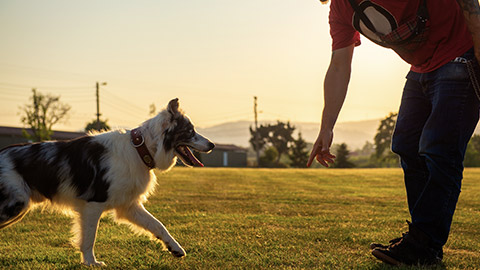
At Happy Paws Animal Care, staff are committed to using humane and balanced training techniques that focus on both positive reinforcement and, when necessary, mild forms of positive punishment to address undesirable behaviours. One of the dogs in their care, a rescue named Max, exhibited excessive barking, particularly when staff were interacting with other dogs or when visitors entered the shelter. This behaviour made it difficult for Max to stay calm and could potentially deter adopters from considering him.
Max, a 2-year-old Border Collie mix, was overly excited and reactive, barking excessively for attention. While the staff prioritised positive reinforcement for good behaviour, they also needed to find a way to discourage his constant barking. After assessing his needs, they decided to incorporate a form of positive punishment alongside positive reinforcement to reduce the behaviour.
Positive Punishment Strategy:
The team decided to use a calm verbal correction ("No") paired with a time-out from attention as a mild positive punishment to signal that barking would lead to an undesirable outcome (loss of attention or interaction). This method avoided any physical or harsh corrections, ensuring that Max’s training remained humane.
Training Process:
- Initial Assessment: Max's barking was largely attention-seeking. He would bark when staff approached his enclosure, expecting to be let out or given treats. The staff noted that Max was not barking out of fear or aggression but rather due to overexcitement and a desire for attention.
- Introducing Positive Punishment: The trainer, Emma, implemented the strategy during daily interactions with Max. When Max began barking excessively for attention, Emma calmly and firmly said, “No,” avoiding any raised voice or physical corrections. Immediately after the verbal correction, she would turn away and ignore Max for a brief period (time-out), removing the attention he sought.
- Timing and Consistency: It was critical that the verbal correction and removal of attention happened immediately after Max started barking. The staff consistently applied this strategy each time Max barked for attention. No staff member rewarded his barking with interaction or treats during this process.
- Pairing with Positive Reinforcement: When Max remained calm and quiet, even briefly, Emma and the other staff members would immediately reward him with verbal praise, treats, or playtime. This helped Max understand that staying calm and quiet would lead to the attention he wanted while barking led to removing that attention.
- Gradual Improvement: Over several days, Max realised that barking resulted in being ignored while being quiet, which led to the rewards he desired. The verbal correction and time-out (positive punishment) were gradually reduced as Max improved, with staff relying more on positive reinforcement to maintain his quiet behaviour.
Within a few weeks, Max's excessive barking had significantly decreased. He learned to control his excitement and stopped barking for attention whenever staff or visitors approached. Max could now stay calm in his kennel, making him more appealing to potential adopters.
Benefits of Positive Punishment in This Case:
- Clear Communication: The verbal correction and removal of attention provided Max with a clear signal that barking was not the appropriate way to get attention.
- Humane Approach: The positive punishment used was mild, avoiding any physical or stressful methods, and it was combined with positive reinforcement to reward good behaviour.
- Reduced Unwanted Behaviour: Max's barking decreased, making him calmer and more comfortable in his environment, improving his chances of adoption.
- Maintained Trust: By avoiding harsh punishment, the staff maintained a positive relationship with Max, ensuring that he still trusted and enjoyed interacting with them.
Ethical Considerations:
- Minimising Stress: Positive punishment was used in a controlled, minimal way to avoid causing stress or fear in Max. The punishment was always followed by positive reinforcement when Max displayed the correct behaviour.
- Balanced Approach: The staff focused on using positive reinforcement for desired behaviours and only applied positive punishment as a brief correction for undesirable actions. This balance ensured that Max remained motivated and happy during his training.
Watch
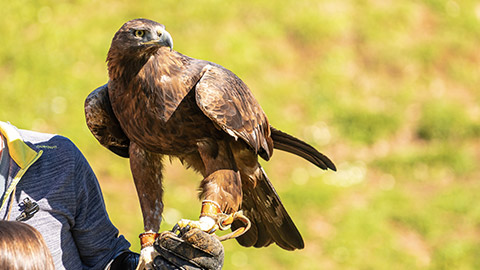
Negative reinforcement is a training technique in which something unpleasant or aversive is removed when the animal performs a desired behaviour, thereby increasing the likelihood that the behaviour will occur again. Unlike positive punishment, which involves adding something unpleasant to reduce a behaviour, negative reinforcement strengthens a behaviour by removing a negative condition or stimulus.
How Negative Reinforcement Works
- Identify the Aversive Stimulus: There is something unpleasant or uncomfortable in the environment that the animal wants to avoid or stop, such as pressure, sound, or an uncomfortable restraint.
- Desired Behaviour to Stop the Aversive Stimulus: The animal learns that by performing a certain behaviour, the aversive stimulus will be removed.
- Behaviour Strengthens Over Time: Since removing the unpleasant stimulus serves as a relief, the animal is more likely to repeat the behaviour to avoid discomfort in the future.
Key Aspects
- It is Not Punishment: Negative reinforcement is not about punishment but about encouraging a specific behaviour by removing something aversive.
- Relief as a Reward: The "reward" in negative reinforcement is the relief from an unpleasant condition, which is why the animal repeats the behaviour.
Examples of Negative Reinforcement in Animals
Horse Training: Pressure and Release with Reins
- Aversive Stimulus: Pressure is applied to the horse’s reins to signal a turn or stop.
- Desired Behaviour: The horse responds to the pressure by turning or stopping.
- Reinforcement: Once the horse performs the desired movement, the rider releases the pressure on the reins.
- Outcome: The horse learns that responding to rein pressure leads to relief from the tension, so it is more likely to comply in the future.
Dog Training: Leash Pressure
- Aversive Stimulus: A dog feels leash tension when it pulls or does not follow the handler’s command.
- Desired Behaviour: The dog moves closer to the handler or stops pulling.
- Reinforcement: The handler releases the tension in the leash when the dog stops pulling or moves in the correct direction.
- Outcome: The dog learns that not pulling on the leash results in the pressure being relieved, so it is more likely to walk without pulling.
Horse Training: Leg Pressure
- Aversive Stimulus: A rider applies pressure with their legs to encourage the horse to move forward.
- Desired Behaviour: The horse moves forward or increases speed.
- Reinforcement: Once the horse moves forward, the rider releases the leg pressure.
- Outcome: The horse associates moving forward with removing pressure, making it more likely to comply when leg pressure is applied.
Dog Training: Escaping a Noise
- Aversive Stimulus: A dog hears a loud, unpleasant sound (e.g., a beep from a remote training collar).
- Desired Behaviour: The dog returns to the handler or stops the unwanted behaviour (e.g., barking or running off).
- Reinforcement: The unpleasant sound stops when the dog complies with the command.
- Outcome: The dog learns that following the command (e.g., coming when called) leads to removing the unpleasant noise, encouraging the desired behaviour in the future.
Bird Training: Stepping Off a Perch
- Aversive Stimulus: A bird feels uncomfortable or unstable while sitting on a certain part of a perch.
- Desired Behaviour: The bird steps off the perch onto the trainer’s hand or another surface.
- Reinforcement: The bird gains stability and relief from discomfort once it steps off the perch.
- Outcome: The bird learns that stepping off the perch removes the feeling of discomfort, so it will respond similarly when prompted in the future.
Cat Training: Avoiding Uncomfortable Surfaces
- Aversive Stimulus: A cat feels uncomfortable walking on aluminium foil or a sticky surface placed on furniture (which is often used to deter scratching).
- Desired Behaviour: The cat moves off the uncomfortable surface.
- Reinforcement: The discomfort stops once the cat leaves the surface.
- Outcome: The cat learns to avoid the uncomfortable area, and the behaviour of not scratching or walking on the furniture is reinforced.
Ethical Considerations and Risks
While negative reinforcement can be effective in training, it must be applied carefully to avoid causing fear, stress, or physical discomfort in the animal. Here are some important factors to consider:
- Avoid Overuse of Aversive Stimuli: Constant or overly harsh aversive stimuli can lead to stress, anxiety, and a breakdown in trust between the animal and the trainer.
- Ensure the Animal Understands: The animal must be able to connect its behaviour with removing the aversive stimulus. If the animal does not understand what is expected, it may become confused or stressed.
- Use with Positive Reinforcement: Negative reinforcement is often more effective and ethical when combined with positive reinforcement. For example, once the animal performs the desired behaviour and the aversive stimulus is removed, offering a treat or praise can strengthen the behaviour in a more positive way.
Negative Reinforcement vs. Positive Reinforcement
- Negative Reinforcement: Involves removing something unpleasant to increase a behaviour. For example, a horse moves forward to remove the pressure from the rider’s legs.
- Positive Reinforcement: Involves adding something pleasant (a reward) to increase a behaviour. For example, giving a dog a treat when it sits on command.
Both techniques can be used in training, but positive reinforcement is generally preferred as it builds trust and promotes a more enjoyable learning experience for the animal.
Case Study
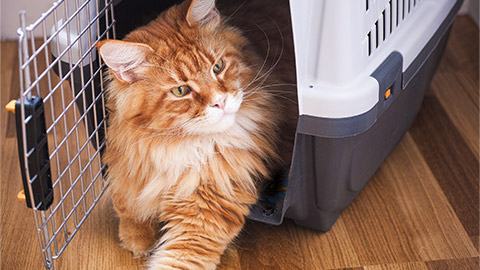
At Happy Paws Animal Care, staff occasionally need to transport animals, including cats, to veterinary appointments or new homes. Many cats dislike entering carriers, which can cause stress for both the animal and the handler. In this case, the staff used negative reinforcement to help a timid cat named Milo learn to enter a carrier willingly, reducing his anxiety and making the process smoother for future transports.
Milo, a 3-year-old domestic shorthair, was nervous around enclosed spaces and had a strong aversion to entering his carrier. Whenever staff attempted to coax him inside, he would resist and try to run away. This created difficulties when it was time for vet appointments or when potential adopters wanted to take him home. The team at Happy Paws decided to apply a negative reinforcement strategy to teach Milo that entering the carrier would remove an uncomfortable stimulus, making it easier to handle him safely.
Negative Reinforcement Strategy:
The staff at Happy Paws decided to use gentle pressure behind Milo to encourage him to enter the carrier. As soon as Milo entered the carrier, the pressure would be removed, and he would be left in peace, thereby reinforcing that entering the carrier stopped the uncomfortable stimulus (pressure).
Training Process:
- Initial Assessment: Milo’s resistance to entering the carrier stemmed from anxiety and fear of being confined. Staff observed that Milo became more agitated when he was forced to enter the carrier by being lifted or pushed, leading to an increase in his anxiety levels.
- Introducing Negative Reinforcement: The handler, Lisa, prepared the carrier with comfortable bedding and left the door open, ensuring that it was a safe and inviting space. She used a soft cloth or her hand to gently pressure Milo’s back end. This was done calmly to avoid scaring him but created a mild discomfort that he would want to escape from.
- The Role of Negative Reinforcement: When Milo approached the carrier and entered it, Lisa immediately removed the pressure from his back. The removal of pressure acted as negative reinforcement, rewarding Milo’s behaviour of entering the carrier by ending the unpleasant sensation.
- Consistency and Gradual Progress: The staff repeated this process several times a day, always applying gentle pressure when Milo hesitated at the carrier door and removing it when he entered. Over time, Milo began to associate entering the carrier with the removal of the slight discomfort, which helped reduce his anxiety.
- Adding Positive Reinforcement: To further encourage Milo, Lisa also used positive reinforcement by rewarding him with treats and praise once he entered the carrier voluntarily. This combination of negative and positive reinforcement helped Milo learn more quickly and made the experience less stressful.
After consistent training over a period of two weeks, Milo started entering the carrier with minimal resistance. He associated entering the carrier with removing pressure and began to feel more comfortable inside the carrier. The use of negative reinforcement, in this case, helped Milo overcome his fear of confinement in a gradual, stress-free manner.
Benefits of Negative Reinforcement in This Case:
- Reduction of Fear: The gentle application and removal of pressure allowed Milo to associate entering the carrier with relief from mild discomfort rather than fear or forceful handling.
- Humane Training: The negative reinforcement used was non-invasive and mild, ensuring that Milo wasn’t traumatised or fearful of the carrier in the long run.
- Improved Handling: Milo became much easier to handle during vet visits and transport, making the process smoother for both staff and potential adopters.
- Increased Comfort: Over time, Milo’s anxiety about the carrier lessened, and he began to see it as a neutral space rather than something to fear.
Ethical Considerations:
- Gentle and Gradual Approach: The staff kept minimal pressure and only used it to gently guide Milo. His well-being was prioritised throughout the training process.
- Combination with Positive Reinforcement: By pairing negative reinforcement with positive reinforcement (treats and praise), Milo’s learning experience remained positive and rewarding.
Watch
The next couple of videos explain the concept of negative reinforcement.
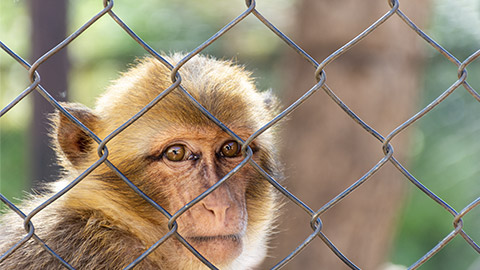
Negative punishment is a training technique where something the animal finds pleasant or rewarding is removed in response to an undesirable behaviour to reduce that behaviour. In other words, the animal loses access to something it values (like attention, toys, or treats) due to unwanted actions. This method teaches the animal that certain behaviours lead to the loss of something enjoyable, discouraging them from repeating those behaviours in the future.
How Negative Punishment Works
- Identify the Undesirable Behaviour: Recognise a behaviour that you want to reduce, such as jumping, barking, or biting.
- Remove a Pleasant Stimulus: When the animal engages in undesirable behaviour, a positive stimulus (such as attention or a toy) is removed immediately.
- Behaviour Reduction: Over time, the animal learns that the undesirable behaviour leads to the loss of something it enjoys, which makes it less likely to repeat that behaviour.
Key Aspects of Negative Punishment
- No Physical Harm: Negative punishment does not involve physical harm or adding something unpleasant, unlike positive punishment.
- Clear Consequences: The animal must understand the connection between its behaviour and removing the reward, so timing is crucial.
- Teaching Boundaries: This method helps animals learn which behaviours are inappropriate by associating them with losing something they like.
Examples of Negative Punishment in Animals
Dog Training: Withholding Attention for Jumping
- Undesirable Behaviour: A dog jumps up on people for attention.
- Punishment: When the dog jumps, the person immediately turns away and withholds attention (no talking, eye contact, or petting).
- Outcome: The dog learns that jumping leads to losing attention, and since the dog desires attention, it is more likely to stop jumping in the future.
Cat Training: Removing a Toy for Rough Play
- Undesirable Behaviour: A cat plays too roughly with its owner, using claws or biting during playtime.
- Punishment: When the cat plays too roughly, the owner immediately removes the toy and ends the play session.
- Outcome: The cat learns that rough play causes the loss of playtime, so it may become gentler in future interactions to avoid losing its toys.
Horse Training: Ending a Ride for Misbehaviour
- Undesirable Behaviour: A horse starts bucking or misbehaving during a ride.
- Punishment: The rider stops the ride and removes the horse from the activity it enjoys (e.g., taking it back to the stable or halting any forward movement).
- Outcome: The horse learns that misbehaving results in the removal of the enjoyable activity, and it may behave better during future rides to avoid being taken out of work.
Dog Training: Time-Out for Over-Excitement
- Undesirable Behaviour: A dog gets overly excited and barks or jumps during play.
- Punishment: The handler stops the play session and gives the dog a brief time-out (such as placing it in a quiet area or crate for a few minutes).
- Outcome: The dog associates over-excitement with the loss of playtime and may start to calm down more quickly to avoid being placed in time-out.
Parrot Training: Removing Attention for Screaming
- Undesirable Behaviour: A parrot screams or screeches for attention.
- Punishment: The owner immediately leaves the room or stops interacting with the bird whenever it screams.
- Outcome: The parrot learns that screaming leads to losing attention and is more likely to reduce this behaviour to maintain human interaction.
Puppy Training: Ending Treats for Begging
- Undesirable Behaviour: A puppy begs for food at the dinner table.
- Punishment: The owner withholds treats or removes the puppy from the room when it starts begging.
- Outcome: The puppy learns that begging results in the loss of treats or attention, discouraging it from repeating the behaviour.
Benefits of Negative Punishment
- Humane and Non-Aversive: This method avoids causing physical or emotional distress, as it doesn’t involve inflicting harm or introducing discomfort.
- Teaches Self-Control: Animals learn to manage their behaviour to maintain access to rewards, leading to better self-control.
- Promotes Desired Behaviours: By removing the rewards associated with undesirable behaviours, animals learn to focus on more appropriate ways to gain positive attention or rewards.
Important Considerations
- Timing is Critical: Removing the positive stimulus must occur immediately after the undesirable behaviour for the animal to understand the connection. If there’s a delay, the animal may not link the behaviour with the consequence.
- Fairness and Clarity: Negative punishment should be applied fairly and consistently. The animal must clearly understand why the positive stimulus was removed.
- Balance with Positive Reinforcement: Negative punishment works best when used in conjunction with positive reinforcement. When the animal stops the undesirable behaviour, it should be rewarded for engaging in appropriate behaviour. For example, if a dog stops jumping on people, rewarding it for sitting calmly encourages the desired behaviour.
Risks of Overuse
- Frustration: If negative punishment is used too often or without providing alternative ways for the animal to earn rewards, it can lead to frustration or confusion.
- Loss of Trust: Constantly removing positive stimuli can strain the relationship between the animal and the handler. It’s important to balance punishment with plenty of positive interactions.
Case Study
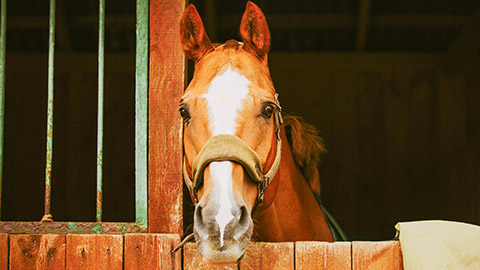
At Happy Paws Animal Care, the staff occasionally work with larger animals, including horses that have been rescued or surrendered. One such horse, Charlie, a 5-year-old Thoroughbred gelding, had developed a habit of nipping at staff and volunteers when he wanted attention. This behaviour was both undesirable and dangerous, so the team decided to address it using negative punishment to reduce the behaviour safely and humanely.
Charlie was generally a well-behaved and friendly horse, but he had a history of nipping at handlers to get attention or treats. While not aggressive, this behaviour could escalate into a safety issue, especially for less experienced staff or volunteers. The team at Happy Paws decided to apply a negative punishment strategy, removing attention when Charlie nipped, to teach him that this behaviour would not be rewarded.
Negative Punishment Strategy:
The team used negative punishment by removing Charlie's attention immediately after he nipped, which was the exact reward he was seeking. This was done by either walking away from him or pausing any interaction, such as grooming or giving treats, to teach Charlie that nipping resulted in losing what he wanted most—attention.
Training Process:
- Initial Assessment: Staff observed that Charlie’s nipping was largely driven by his desire for attention, food, or interaction. Nipping had become his go-to method for getting immediate attention, as past handlers had unintentionally reinforced the behaviour by giving him treats or continuing to interact with him after he nipped.
- Introducing Negative Punishment: The handler, Megan, started working closely with Charlie during grooming and feeding times. Each time Charlie attempted to nip her for attention, Megan would calmly but firmly stop all interaction with him. If he nipped while being groomed, she would immediately step away, leaving Charlie without the grooming he sought. If Charlie was being fed or handled, Megan would stop the process and wait until he stopped the undesirable behaviour before continuing.
- Timing and Consistency: The success of negative punishment relies heavily on timing. Megan and the rest of the team ensured that they removed attention immediately when Charlie nipped, making the consequence clear to him. They were also consistent in applying this strategy, so Charlie couldn’t get away with nipping to get what he wanted from different handlers.
- Reinforcing Good Behaviour: While negative punishment removed the reward of attention for nipping, the team also used positive reinforcement to reward Charlie for calm, gentle behaviour. Whenever Charlie behaved calmly during grooming or feeding, he was praised, patted, or given a small treat. This balance ensured that Charlie knew how to get attention in a positive way.
- Gradual Improvement: Over time, Charlie began to understand that nipping no longer worked as a method of getting attention. As his nipping behaviour decreased, the staff reinforced his calm behaviour more frequently, giving him attention when he stood quietly without trying to nip.
Within a few weeks, Charlie’s nipping significantly reduced. He learned that nipping no longer resulted in attention or treats but instead caused the handlers to walk away or stop interacting with him. Charlie began standing calmly during grooming and feeding sessions, understanding that this behaviour would more likely get him the positive attention he wanted.
Benefits of Negative Punishment in This Case:
- Clear Consequences: By removing the attention Charlie sought, the staff clearly communicated that nipping was not an acceptable way to interact with humans.
- Humane and Non-Aggressive: Negative punishment, in this case, involved simply removing attention, making it a humane and non-aggressive way to correct undesirable behaviour without causing fear or distress.
- Reinforced Calm Behaviour: By pairing negative punishment with positive reinforcement, Charlie learned that calm, gentle behaviour resulted in the attention and rewards he desired, creating a more positive relationship with the handlers.
Ethical Considerations:
- No Physical Punishment: The team avoided using physical punishment or force to stop Charlie’s behaviour. Instead, they focused on removing the reward (attention), which was ethical and safe.
- Balanced Approach: Combining negative punishment with positive reinforcement ensured that Charlie’s training remained positive overall, reducing the likelihood of stress or confusion.
Watch
The next couple of videos explain negative punishment
